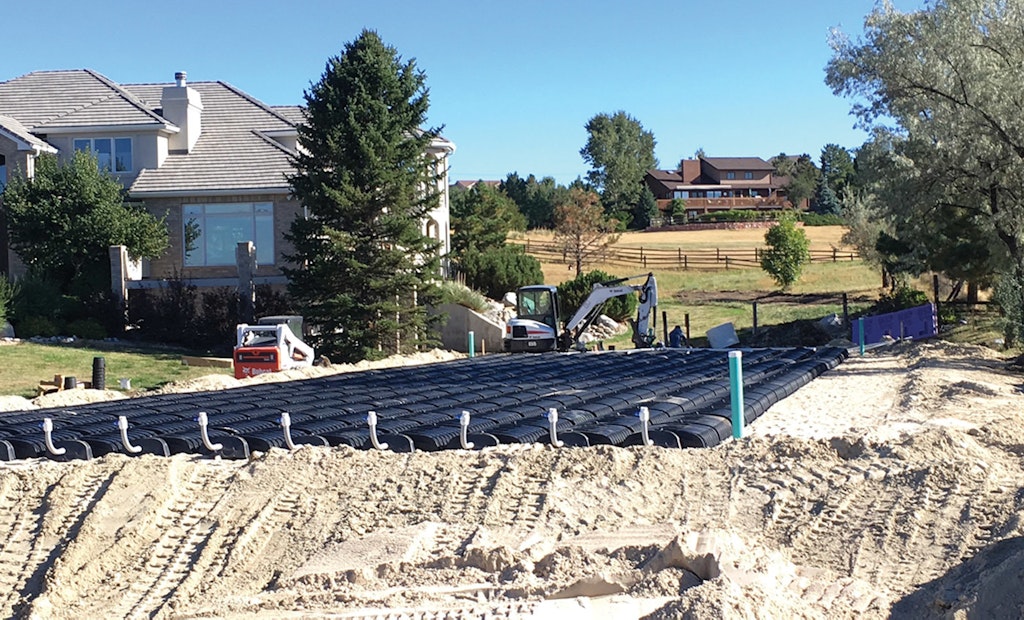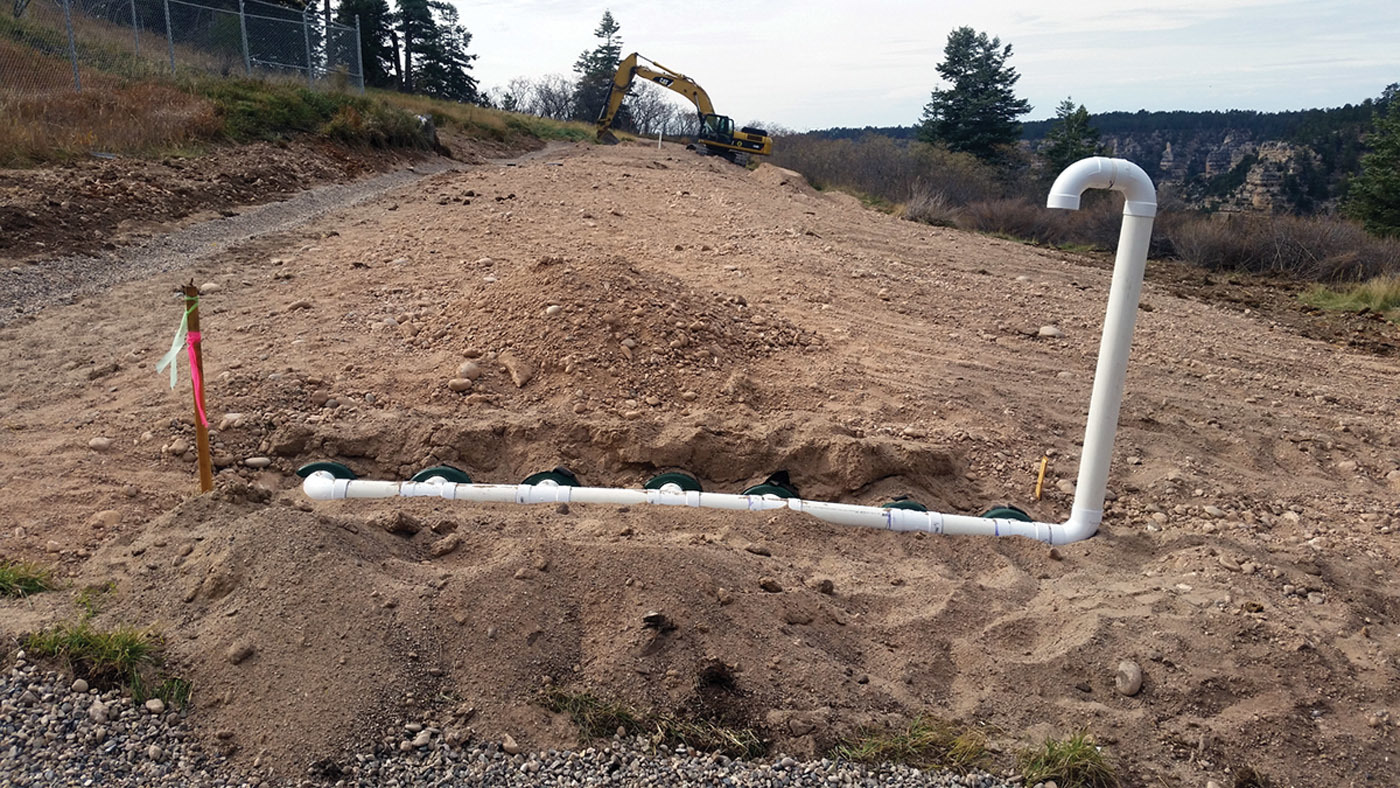Interested in Drainfield Media?
Get Drainfield Media articles, news and videos right in your inbox! Sign up now.
Drainfield Media + Get AlertsSand filter system with chambers solves site and soil challenges
Problem: After purchasing a five-bedroom home in Centennial, Colorado, the homeowners were notified by the local health department that the septic system was red-tagged due to effluent surfacing in several areas of the drainfield. Design options for a replacement drainfield were limited due to the low permeability clay soils and the constricted site. Scott Kellogg of Douglas County Septic reached out to system designer, Kate Carney, P.E., of CHURCH Onsite Wastewater Consultants.
Solution: Carney designed a new 675-gpd mounded pressurized sand filter system that could be installed in the footprint of the existing 4,600-square-foot disposal system. Wastewater flows 54 feet from the house to a 2,000-gallon septic tank. The on-demand pump in the third compartment of the tank discharges 84 gallons per dose to the automatic distribution valve. The ADV alternates dosing to six zones in the 3,672-square-foot mounded Quick4 Plus low-profile chamber drainfield from Infiltrator Water Technologies. Each zone has two 102-foot-long rows of 25 chambers each and 1.25-inch PVC laterals with 1/8-inch orifices drilled on 36-inch centers are suspended in the chambers at the 12 o’clock position. The automatic distribution valve was placed in an insulated riser to prevent freezing. Backfilling and grading and the construction of a swale divert runoff from the drainfield. Underground drainpipes were installed to collect and divert roof runoff.
Result: The installation was successful. Douglas County Septic will monitor the system components and pump the tank as needed. 800-221-4436; www.infiltratorwater.com.
Passive treatment system provides winter treatment at national park
Problem: One of Grand Canyon National Park’s public facilities, a 150,000-gpd wastewater treatment plant, is closed during the winter at the North Rim. National Park Service employees currently use an old converted treatment system as a septic tank and leachfield during the winter operations. The park service wanted to replace and upgrade the disposal system due to age and the increased potential for a failure that would require curtailment of staff operation and maintenance functions during the winter.
Solution: The site investigation was completed and it was determined that upgrading the treatment along with a new disposal system was merited by the site conditions. They decided to install a 2,900-gpd, 1,400-linear-feet Advanced Enviro-Septic system from Presby Environmental Inc. (PEI). It is a combined treatment and dispersal system that requires no electricity or special maintenance. The system would serve eight one-bedroom apartments and 13 employees.
Result: The installation was successful, providing an updated passive treatment and dispersal system that doesn’t require special maintenance or upkeep. 800-473-5298; www.presbyeco.com.







